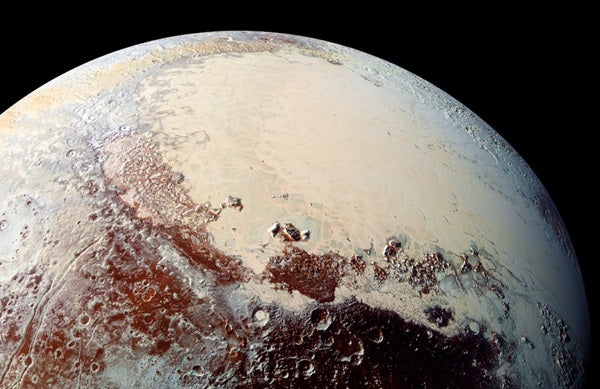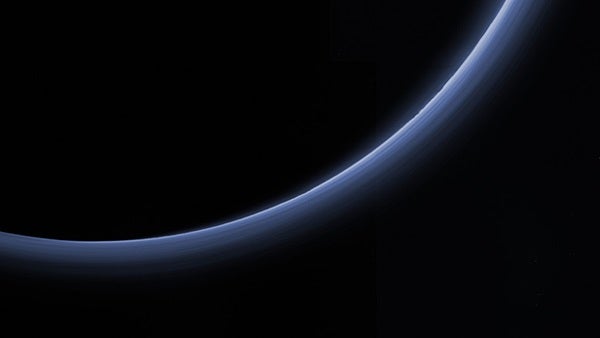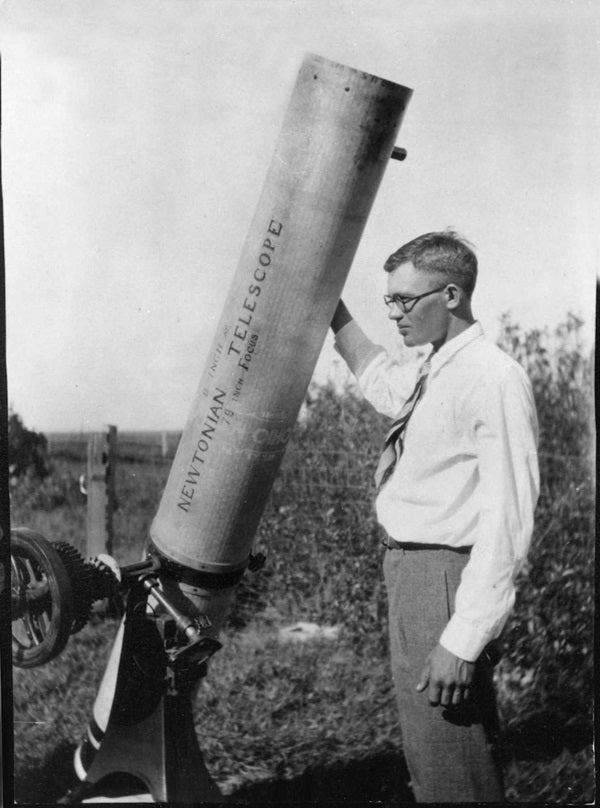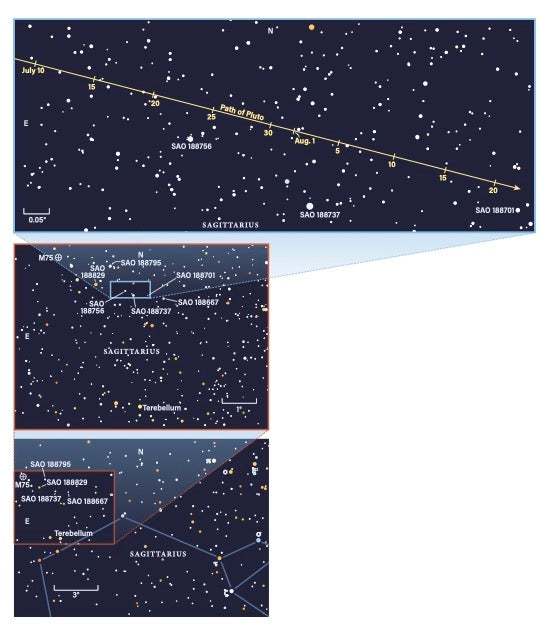In 1929, Clyde William Tombaugh, a farm boy who grew up in Illinois and Kansas, began working at Lowell Observatory in Flagstaff, Arizona. The director of the facility, renowned astronomer Vesto Slipher, had hired Tombaugh based on some high-quality sketches of Jupiter and Mars he sent to the observatory.
Tombaugh’s job was to search for Planet X, a world that some astronomers believed existed beyond Neptune. Using the observatory’s 13-inch astrograph, Tombaugh exposed hundreds of glass plates. His search strategy involved photographing the same region of sky several days apart and then using a machine called a blink comparator to see if any objects on the plates moved. It took him only until January 1930 to stumble onto Pluto.
Since then, amateur astronomers have regarded observing the distant, ever-so-faint world as a badge of honor. If you haven’t seen Pluto, this month offers yet another chance to tick it off your bucket list.
Be prepared
Pluto reached opposition at 2h UT on July 20 (10 P.M. EDT on July 19). Observers always target planets (especially those beyond Saturn) near opposition because that’s when they appear brightest. At that point, because the planet lies opposite the Sun in our sky, it rises at sunset, climbs highest at midnight, and sets at sunrise.
Because our July issue was devoted to space art, this story is appearing slightly after that event. At opposition, Pluto glowed weakly at magnitude 14.9. Don’t fret if you didn’t see it on that night, however. Its distance from the Sun changed so little that, on Aug. 26 — the night closest to New Moon this month — it will have faded by a mere 0.2 magnitude.
As you might imagine, a magnitude 14.9 dot is going to be tough to identify. Pluto was a slightly easier catch — at magnitude 13.8 — when it was at perihelion, the point of its orbit closest to the Sun. But that was Sept. 5, 1989, and the planet has been moving farther from the Sun ever since. It won’t start approaching our daytime star again until 2114. So, the longer you wait, the less chance you have of bagging this elusive quarry.
Let me be honest here. An 8-inch telescope will give great views of clusters, nebulae, and some galaxies — but not Pluto. To track it down, you need to think bigger. An 11-inch scope will reveal the tiny dot and enough faint stars around it so that you can identify it. But if you can go bigger, do it.
And the scope is only the beginning of this odyssey. You’ll also need to transport it to an observing site that has great seeing (a measure of the atmosphere’s steadiness). If the Moon is anywhere in the sky, forget finding Pluto. Our atmosphere scatters the Moon’s light, raising the background glow to a point where you will not see the world.
Track it down
Use the charts on this page to help you to identify Pluto. Illuminate them with a dim red light; that color has the least impact on your eyes’ dark adaptation, but even red light will ruin your night vision if it’s too bright.
On July 19, the dwarf planet lies in eastern Sagittarius, about 2° from that constellation’s border with Capricornus. It also lies 2° west-southwest of globular cluster M75, which is worth a look through a medium to large telescope. Pluto’s right ascension is 19h58m, and its declination is –22°50′. The planet first entered Sagittarius in December 2006 and reaches Capricornus in early 2024.
Start with the wide-field view at the bottom of page 26 and identify the Teapot, the eight stars that make up Sagittarius’ main asterism. From magnitude 3.3 Tau (τ) Sagittarii, the star in the lower left corner of the Teapot’s handle, move 11° east to magnitude 4.7 Terebellum (Omega [ω] Sagittarii). It’s part of a group of four similarly bright stars.
From Terebellum, move slightly more than 3° north and find the magnitude 7.8 star SAO 188737. Pluto now will lie within the eyepiece, a mere 25′ northeast of that star. To get there, look 15′ to the northeast for magnitude 8.9 SAO 188756. (Note that these instructions are for those without computerized drives. If your telescope sits atop a go-to drive, all SAO stars are probably in its database. So, just enter “SAO 188756” and hit “Go To.”)
SAO 188756 anchors a trio of stars, all brighter than Pluto, angling northwest. Just to the northeast is a smaller and fainter but similarly angled trio of stars. It forms one side of an equilateral triangle with a star of nearly the same brightness. The faintest of this group just barely outshines your target. If you locate these stars early in the evening and return to this view six or eight hours later (owners of motorized telescope drives can just leave them on), you may notice that one object has changed its position. That’s Pluto.
It’s tough to remember such fine details, however, especially when a plethora of stars surrounds the ones you’re trying to target. A much better strategy is to sketch the region. Then come back to it a few hours later. Even better, return the following night (or two or three nights later), and re-sketch. Pluto will be the only point of light whose position is different. If you do return several nights later, remember to allow the Moon to set. The main chart on page 26 shows background stars to magnitude 16, so you should be able to locate Pluto, which glows slightly brighter than this limit. Be patient, though: This isn’t a sight that will instantly reveal itself to you.
Also, remember that Pluto is moving westward. Outer planets generally move to the east through the stars. But around opposition, Earth, in its orbit, passes Pluto, causing it to appear to travel west. This apparent reversal is called retrograde motion.
Pluto is an object that every amateur astronomer should see. Even though the process is a bit difficult, you’ll feel a sense of accomplishment having done it. Good luck!













